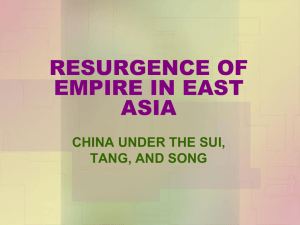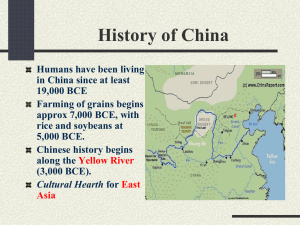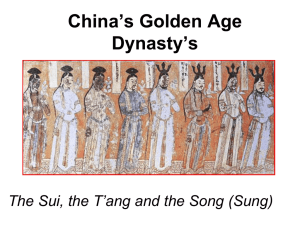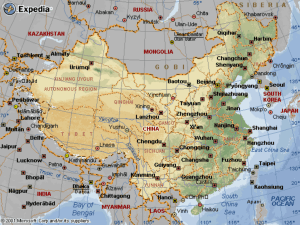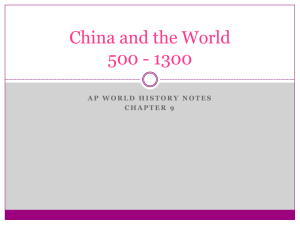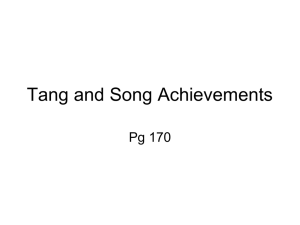china__reunification,_achievement
advertisement
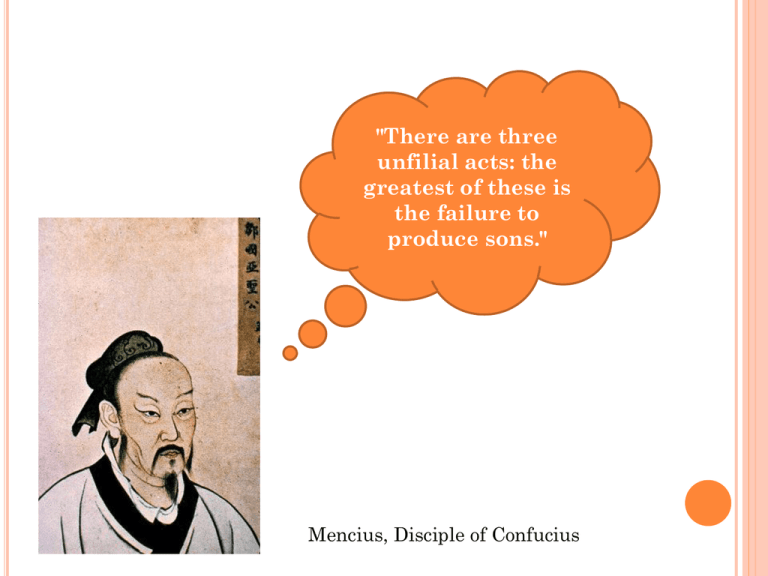
"There are three unfilial acts: the greatest of these is the failure to produce sons." Mencius, Disciple of Confucius Chinese Dynasty Song (Tune ---- Frère Jacques / Are You Sleeping / Where is Thumbkin.) Shang Zhou (“Joe”) Qin (“chin”) Han (Repeat) ( ------------------- 400 years of Disunity ------------------) Sui (“sway” without “w”) Tang Song (Repeat) Yuan ------ Mongol Ming Qing (“ching”) --------Manchu Republic -------- Republic of China (Repeat) Mao Zedong ---------People’s Republic of China / Communist China (Repeat) THE REEMERGENCE OF A UNIFIED CHINA The collapse of the Han dynasty around 220 CE gave rise to more than three centuries of political fragmentation in China and the rise of powerful aristocratic families It also meant the incursion of northern nomads, many of whom adopted Chinese customs Disunity was considered unnatural in the eyes of many Chinese and weakened Confucianism’s hold on China, allowing greater acceptance of Buddhism and Daoism among the elite During this period, the beginning of a Chinese migration southward toward the Yangzi River began This southward migration toward the Yangzi River Valley gave southern China some 60% of the country’s population by 1000 CE. But unlike the fall of the western Roman Empire where political fragmentation proved a permanent condition, China regained unity under the Sui dynasty (589-618) Sui emperors solidified that unity by a vast extension of the country’s canal system, stretching some 1,200 miles in length -Canals linked northern and southern China Ruthlessness of Sui emperors and a futile military campaign to conquer Korea exhausted the state’s resources and alienate many people -The Dynasty was overthrown However, no prolonged disintegration of the Chinese state The Tang 9618-907) and the Song (960-1279) dynasties that followed built on the Sui foundations of renewed unity Together they established patterns of Chinese life that endured into the twentieth century, despite a fifty-year period of disunity between the two dynasties Culturally, this period has been regarded as a “golden age” of arts and literature -And particularly during the Song dynasty, an explosion of scholarship gave rise to NeoConfucianism, reviving it while incorporating some insights from Buddhism and Daoism The examination system was revived and made more elaborate, encouraged by the ability to print books for the first time in world history -Selecting officials on the basis of merit Despite state efforts to periodically redistribute land in favor of peasants, families of large landowners continued to encroach on peasant plots China experienced rapid population growth Agricultural achievements, particularly with the adoption of a fast-ripening and drought-resistant strain of rice from Vietnam Most urbanized country in the world -Song capital of Hangzhou was home to more than a million people Supplying cities with food was possible due to the immense network of internal waterways, stretching perhaps 30,000 miles Industrial production soared -China’s iron industry increased its output dramatically Inventions in printing, both woodblock and movable type, generated the world’s first printed books China’s navigational and shipbuilding technologies led the world The Chinese invention of gunpowder would soon revolutionize military affairs Most highly commercialized society, producing for the market rather than local consumption In addition, government demands for taxes paid in cash rather than in kind required peasants to sell something in order to meet their obligations. The growing use of paper money as well as financial instruments such as letters of credit and promissory notes further contributed to the commercialization of Chinese society. WOMEN IN THE SONG DYNASTY But this “golden age” was less “golden” for women Under the influence of steppe nomads, women led less restricted lives -Elite women of the Tang dynasty had participated in social life with greater freedom than in classical times But by the Song dynasty, a reviving Confucianism and rapid economic growth seemed to tighten patriarchal restrictions on women and to restore some of the earlier Han dynasty images of female submission and passivity What is beauty? Once again Confucian writers highlighted the subordination of women to men and the need to keep males and females separate. But the most compelling expression of a tightening patriarchy lay in foot binding. Beginning apparently among dancers and courtesans in the tenth or eleventh century CE, this practice involved the tight wrapping of young girls’ feet, usually breaking the bones of the foot and causing intense pain During the Tang dynasty, foot binding spread widely among elite families and later became even more widespread in Chinese society It was associated with new images of female beauty and eroticism that emphasized small size, delicacy, and reticence And a rapidly commercializing economy undermined the position of women in the textile industry as urban workshops and state factories, run by men, increasingly took over the skilled tasks of weaving textiles, especially silk Foot binding restricted women to the “inner quarters” due to the pain that now accompanied walking. Chinese Foot Binding "Every pair of small feet costs a bath of tears". A woman with bound feet An old popular saying was that a mother couldn't love her daughter and her daughter's feet at the same time. Foot Binding vs High Heels Even though the bound foot's pressure was mainly on the heel and the high heel's pressure was on the front pads and toes, both the bound foot and high heel foot have similar profiles and both demonstrate how it gives a significant arch to the foot (Koda 159). Although foot-binding is no longer practiced, many women with bound feet are still alive. Author Beverley Jackson photographed this woman in Yunan Province in 1997. CHINA AND NORTHERN NOMADS From early times to the nineteenth century, China’s most enduring and intense interaction with foreigners lay to the north, involving nomadic pastoral or semi-agricultural peoples of the steppes -Mastery of horse riding -Emphasis on raising livestock Nomads were drawn to China through trading, raiding, and extorting in order to obtain resources vital to their way of life like grain and other agricultural products as well as a desire for China’s luxury goods But from the nomads’ point of view, the threat often came from the Chinese, who periodically directed their own military forces deep into the steppes, built the Great Wall to keep nomads out, and often proved unwilling to allow pastoral peoples easy access to trading opportunities within China. And yet China needed the nomads, particularly its horses, horses that were essential for the Chinese military Nomads also controlled much of the Silk Road trading network The Chinese came to view China as the “middle kingdom” or the center of the world, infinitely superior to the “barbarians” beyond its borders That worldview took shape as a practical system for managing China’s relations with its northern nomads and other non-Chinese peoples -A “tribute system” -A set of practices that required non-Chinese to acknowledge Chinese superiority and their own subordinate place in the world Foreigners had to perform the kowtow, a series of ritual bowings and prostrations, and present their tribute, produce of value from their countries, to the Chinese emperor. In return, the emperor would grant permission for foreigners to trade. But sometimes China was confronting large and powerful nomadic empires like the Xiongnu, established about the same time as the Han dynasty. Rather than tribute, the Chinese were forced to pay a kind of “protection money” to the Xiongnu. Then the Xiongnu refrained from military incursions into China. But the founders of the Sui and Tang dynasties were of mixed nomad and Chinese ancestry and came from the borderland regions where a blended Chinese/Turkic culture had evolved. So, the boundaries between Chinese and nomadic cultures were rarely culturally fixed boundaries. Why are the centuries of the Tang and Song dynasties in China sometimes referred to as a "golden age"? In what ways did women's lives change during the Tang and Song dynasties? How did the Chinese and their nomadic neighbors to the north view each other? What assumptions underlie the tribute system? How did the tribute system in practice differ from the ideal Chinese understanding of its operation? In what ways did China and the nomads influence each other?

